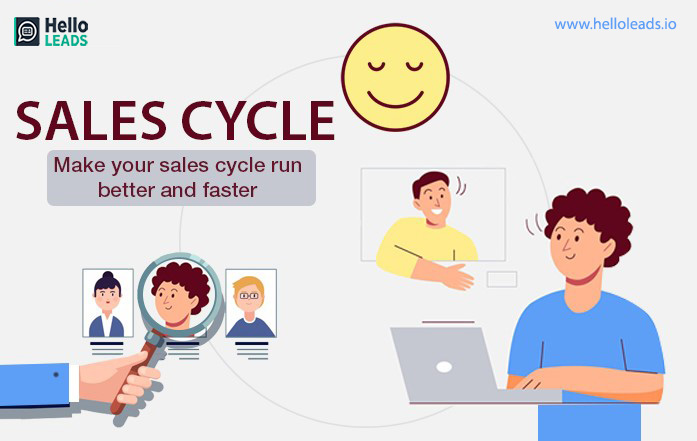
Every organization has their own sales cycle and they follow different steps and strategies to close a deal. For salespersons, mastering each one of these steps is essential to succeed in sales.
In this blog, we’ll walk you through the importance of sales cycle, the different steps of a sales cycle and how to improve your sales process.
What is a sales cycle?
A sales cycle is a set of pre-defined stages or steps that salespeople follow to turn leads into customers. It can be described as a series of steps that encompasses everything about selling a product, from identifying a prospect to closing a sale.
Why do you need a sales cycle?
Having a robust sales cycle helps you to close more deals in a limited period of time. It can provide insights to improve your sales process and enhance the customer’s buying experience. The benefits of having a sales cycle are numerous – starting from training new salespersons to structuring your team more effectively.
Stages in Sales cycle
Business organisations follow varying sales cycle steps but there are some basic steps that are followed by most of the businesses.
The key seven stages of the sales cycle are:
- Prospecting,
- Making contact,
- Qualifying the lead,
- Nurturing the lead,
- Presenting your offer / solution,
- Handling objections and
- Closing the sale.
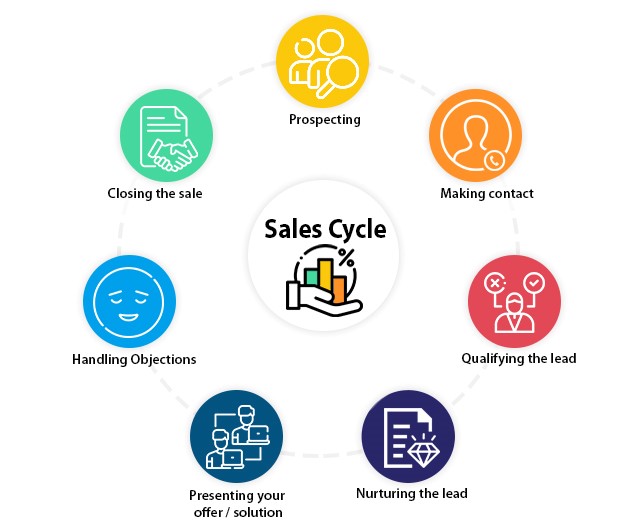
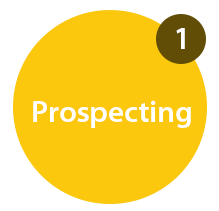
The sales cycle begins with identifying target prospects. During this process, your salesperson can gather a list of leads from multiple sources like websites, business cards and phone calls.
It is always important to create an ideal customer profile (ICP) that helps you to distinguish which person / company is most likely to do business with you on a long-term. Once you create a profile, you can share it with your sales team.
Once you have your ICP, you can generate a database of potential leads who match that profile and reach out to those leads to find whether they’re interested in your products and services.
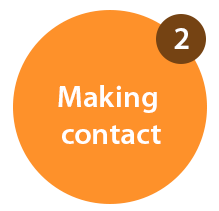
Once you have gathered information of your potential leads, you have to start contacting them.
What’s the best way to get hold of your potential leads? You’ll have to determine which stage of the buyer’s journey your potential leads are in to purchase your product or service.
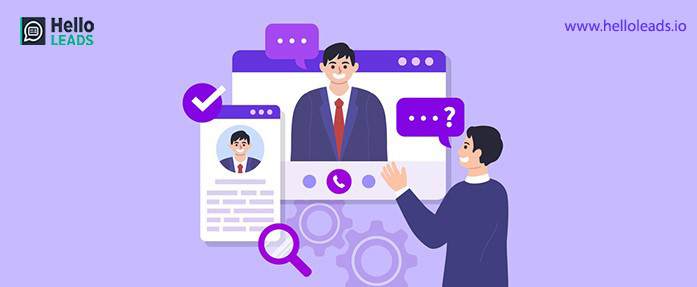
For instance, your lead might have downloaded an insight / blog / eBook from your website to gather some information to solve their problem but may not be looking to purchase yet. In this case, you can reach out to them via email before you even call them.
Suppose, if your lead has filled out a form on your website requesting for a quote, it is a clear indication that they are ready for a purchase and you can directly give them a call.
It is always a good practice to call your leads in a timely manner to make a good first impression.
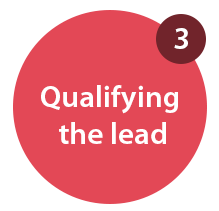
Qualifying your lead is the next step in your sales cycle. Determining whether or not the lead is a good fit as a customer is important as it will save your time and effort to turn them into a customer.
Though you have already done some research about your lead in the previous steps of the sales cycle, you can perform a quick search again to get more information about your lead.
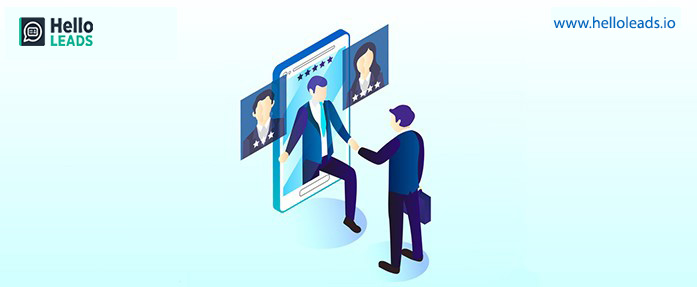
There are several methodologies to qualify a lead including:
- BANT (Budget, Authority, Need, Timescale),
- MEDDIC (Metrics, Economic Buyer, Decision Criteria, Decision Process, Identify Pain, Champion) and
- CHAMP (CHallenges, Authority, Money, Prioritization).
To qualify a lead, you need to ask questions related to budget, authority, needs and timeline.
If your lead is qualified and fits your ICP, you may proceed with needs assessment. You can further initiate a phone call or organize for a face-face meeting with your lead to understand if your product or service can solve their challenges.
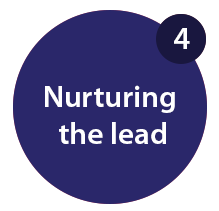
Many times, you may come across leads who are interested and otherwise qualified, but for whatever reason aren’t ready to purchase your product / service right now. In this case, start nurturing your lead to stay on top of their mind when they are ready to buy.
When you try to force your lead to buy, when they aren’t ready, they are going to run the other way. So, when it comes to purchase, one of the best ways to gain your lead’s trust is to provide highly valuable content that is relevant to your lead.

It is always good to set up an effective Email marketing campaign to provide relevant contents and stay in touch with your lead.
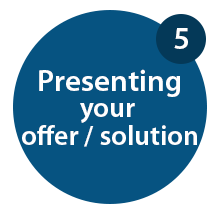
Now when the lead is almost ready to purchase your product or service, they will request for a demo or for a product trial.
During the demo, you can clearly communicate how your product or service meets their needs. You can actively demonstrate the features and benefits of your product / service offerings connecting with their business needs.
After you provide them a free trial, present your offer personalized to their needs and giving them an assurance that they are investing in the right solution.
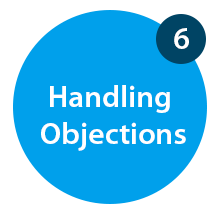
Once you have made your offer, usually your leads may return with objections including:
- The price is too high
- “I’ve never heard of your company”
- “I don’t see how your product can help me”
- “This isn’t important for me right now”
- Competition is offering a better product
At this point you have to stay calm and when you respond, understand the objection clearly and address their concerns. Make sure that you handle objections that relate to each other and always confirm if they are satisfied.
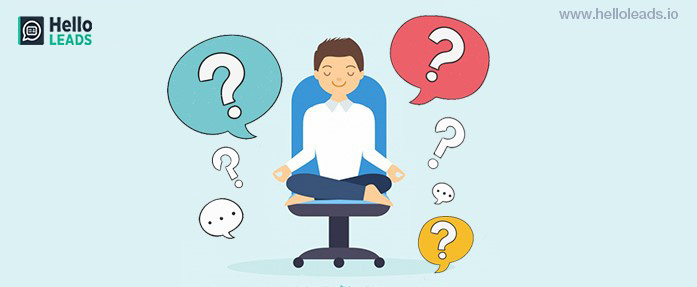
Once you have handled all the objections, you can move into the final stage.
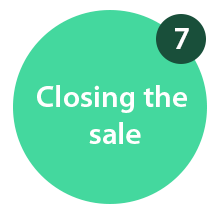
Now it’s time to close the sale. This stage includes activities like signing contracts, pricing discussion and any other additional paperwork.
It is always better to understand your lead’s method and style of closing the sale. You can follow a direct approach like forms and paperwork if you have established a good connection with your lead.
On the other hand, if your lead is tentative, you may go for a softer approach. You can again communicate how your product or service will meet their needs and share a price estimate or a quote with some more technical details
Once you’ve closed the deal, ensure whether they have any questions and provide them the next steps.
Later once they are satisfied with the sales and support, you can even ask for referrals as you build a strong relationship with your lead.
In today’s competitive environment, to be truly successful in business developing and adopting a robust sales cycle will help you improve sales and grow your business.
I am sure this blog would have helped you gain few insights on the various stages of a sales cycle.
Keep watching for more such blogs to help you accelerate your Sales!
Share this blog :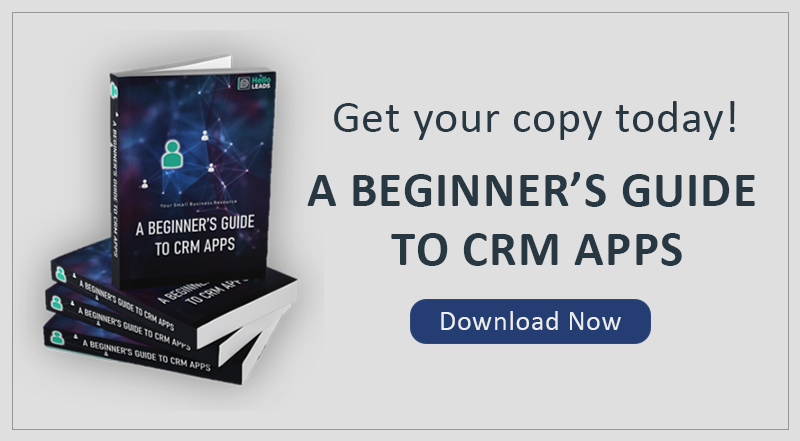












Leave a Reply